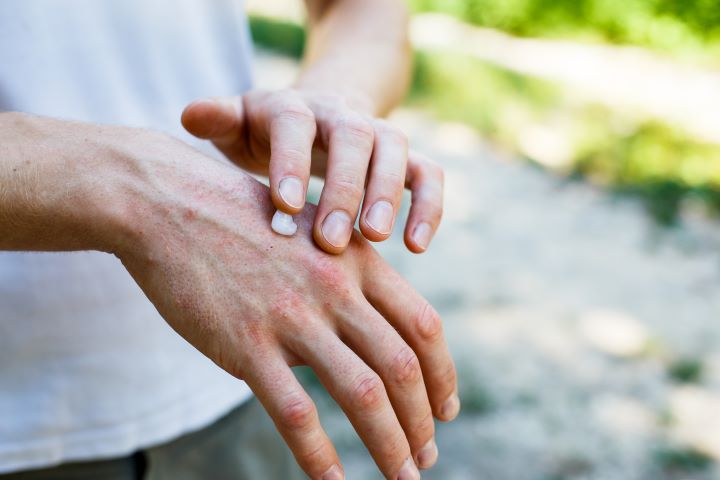Atopic Dermatitis in 2025: Subtle Signs You Shouldn’t Miss
Atopic dermatitis, often mistaken for dry skin or a basic rash, can quietly progress into a chronic condition without early recognition. The symptoms might seem minor at first—mild itching, redness, or rough patches—but ignoring them could lead to skin thickening, infections, and long-term discomfort. This article breaks down subtle signs, potential causes, and when it’s time to seek help—so you can spot the condition before it worsens.

What Are the Early Warning Signs of Atopic Dermatitis?
The earliest signs of atopic dermatitis often appear before the characteristic red, inflamed patches that most people recognize. Persistent dry skin that doesn’t respond well to regular moisturizers can be one of the first indicators. This dryness typically affects specific areas like the creases of elbows and knees, around the eyes, or on the hands and feet.
Another early warning sign is increased skin sensitivity to fabrics, soaps, or environmental factors. You might notice that certain clothing materials cause irritation or that your skin reacts poorly to products you’ve used without issue in the past. Sleep disturbances due to nighttime itching, even when visible symptoms are minimal, can also signal the onset of atopic dermatitis.
What Hidden Signs Are Linked to Atopic Dermatitis?
Beyond the visible skin symptoms, atopic dermatitis presents several hidden signs that many people don’t connect to the condition. Frequent skin infections, including bacterial infections from scratching or fungal infections in skin folds, often indicate compromised skin barrier function associated with atopic dermatitis.
Changes in skin texture, such as areas becoming thicker or developing a leather-like appearance, can develop gradually and may be mistaken for simple aging or environmental damage. Additionally, people with atopic dermatitis often experience what dermatologists call “atopic march” - a progression that may include food allergies, asthma, or allergic rhinitis developing alongside or before skin symptoms become apparent.
Which Symptoms Should Never Be Ignored?
Certain symptoms associated with atopic dermatitis require immediate attention and should never be dismissed as minor skin irritation. Widespread redness accompanied by fever could indicate a serious complication called eczema herpeticum, which requires urgent medical treatment.
Persistent oozing, crusting, or the development of painful blisters rather than typical dry patches suggests secondary bacterial infection. Any sudden worsening of symptoms, particularly if accompanied by systemic signs like swollen lymph nodes or general malaise, warrants prompt medical evaluation. Symptoms that significantly interfere with daily activities or sleep should also be addressed professionally rather than managed with over-the-counter treatments alone.
How Can You Recognize Atopic Dermatitis in Time?
Early recognition of atopic dermatitis involves paying attention to patterns and triggers rather than waiting for severe symptoms to develop. Keep track of when and where skin irritation occurs, noting potential environmental or dietary triggers. Family history plays a significant role, as atopic dermatitis has strong genetic components.
Seasonal patterns often emerge, with many people experiencing flares during winter months when indoor heating reduces humidity, or during spring and summer when pollen and other allergens are prevalent. Document your skin’s response to different products, stress levels, and lifestyle changes to identify patterns that might indicate developing atopic dermatitis.
Current Approaches to Treatment and Management
Treatment approaches for atopic dermatitis have evolved significantly, with 2025 bringing more personalized and targeted therapies. Topical treatments remain the first line of defense, including prescription corticosteroids and newer non-steroidal options like calcineurin inhibitors and PDE4 inhibitors.
For moderate to severe cases, systemic treatments such as oral immunosuppressants, biologics like dupilumab, and JAK inhibitors have shown remarkable effectiveness. The key to successful management lies in developing a comprehensive skincare routine that includes gentle cleansing, consistent moisturizing, and trigger avoidance. Many dermatologists now emphasize the importance of addressing the skin barrier dysfunction that underlies atopic dermatitis, using ceramide-rich moisturizers and barrier repair treatments as preventive measures rather than reactive solutions.
Current management strategies also focus heavily on patient education and lifestyle modifications. This includes understanding proper bathing techniques, choosing appropriate clothing materials, managing stress levels, and creating an environment that supports skin health. Regular follow-up with healthcare providers helps adjust treatment plans as the condition evolves and ensures that new therapeutic options are considered when appropriate.
The landscape of atopic dermatitis treatment continues to advance, with emerging therapies offering hope for better long-term control and improved quality of life for those affected by this complex condition.
This article is for informational purposes only and should not be considered medical advice. Please consult a qualified healthcare professional for personalized guidance and treatment.




